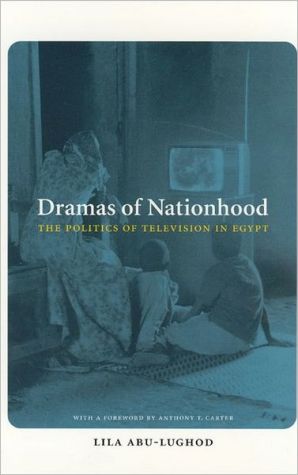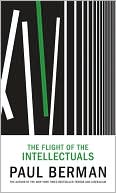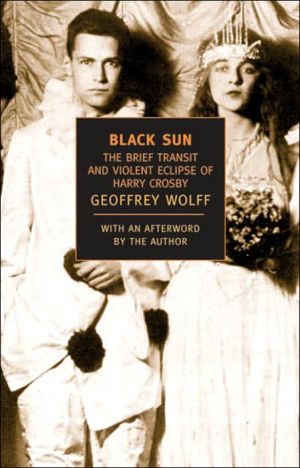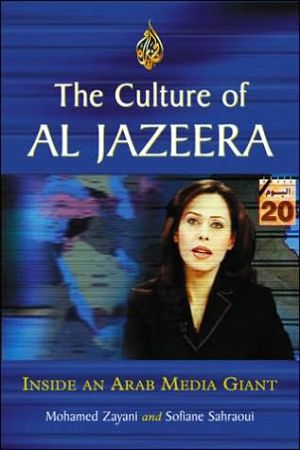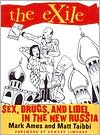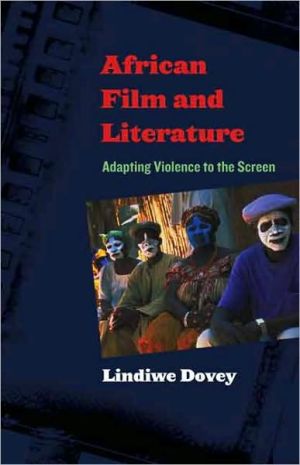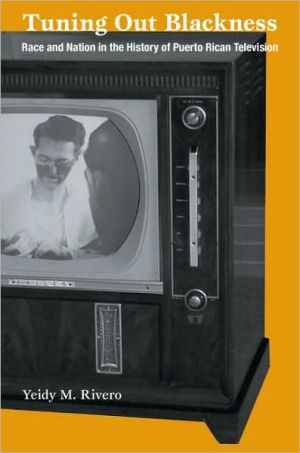Dramas of Nationhood: The Politics of Television in Egypt
How do people come to think of themselves as part of a nation? Dramas of Nationhood identifies a fantastic cultural form that binds together the Egyptian nation—television serials. These melodramatic programs—like soap operas but more closely tied to political and social issues than their Western counterparts—have been shown on television in Egypt for more than thirty years. In this book, Lila Abu-Lughod examines the shifting politics of these serials and the way their contents both reflect...
Search in google:
How do people come to think of themselves as part of a nation? Dramas of Nationhood identifies a fantastic cultural form that binds together the Egyptian nation—television serials. These melodramatic programs—like soap operas but more closely tied to political and social issues than their Western counterparts—have been shown on television in Egypt for more than thirty years. In this book, Lila Abu-Lughod examines the shifting politics of these serials and the way their contents both reflect and seek to direct the changing course of Islam, gender relations, and everyday life in this Middle Eastern nation.Representing a decade's worth of research, Dramas of Nationhood makes a case for the importance of studying television to answer larger questions about culture, power, and modern self-fashionings. Abu-Lughod explores the elements of developmentalist ideology and the visions of national progress that once dominated Egyptian television—now experiencing a crisis. She discusses the broadcasts in rich detail, from the generic emotional qualities of TV serials and the depictions of authentic national culture, to the debates inflamed by their deliberate strategies for combating religious extremism.
Dramas of Nationhood \ The Politics of Television in Egypt \ \ By LILA ABU-LUGHOD \ The University of Chicago Press \ Copyright © 2005 The University of Chicago\ All right reserved.\ ISBN: 978-0-226-00197-5 \ \ \ \ \ Chapter One \ Ethnography of a Nation \ FOR MUCH OF THE DAY, tour buses fill the new parking lot in front of the Pharaonic temple at the center of the small Upper Egyptian hamlet in which I have worked for the last decade. European tourists in shorts and sunburns and Egyptian schoolchildren dressed in their best clothes spill out of the vehicles and are herded back in. Some buy potato chips from makeshift stands set up by local women (the Antiquities Organization that controls the area will not authorize new vendors' permits). Some get drinks, including bottled water, at one of the cafés that compete for their business. Some look suspiciously at replicas of Pharaonic cats and ibises that local guys furtively unwrap for them. Most dutifully make the tour of the temple, one of several sites across the Theban necropolis they will visit that long day.\ At 4:30, as closing time nears at the temple, bored security guards in bulletproof vests begin to get restless. The young men of the village now drift into the parking lot. As the shadows lengthen and the sun begins to sink, jeeps carry off the guards, who have been posted here ever since Islamic militants began targeting tourists. Hiking up their gallabiyyas (long robes) to reveal shorts, the young men pull out a ball and begin to play soccer. The hamlet is returned to the comings and goings of its residents. Sheep are brought in for the night; empty donkey carts head home; people put on their visiting clothes and head off to call on the sick. There is a lot of movement on the road and in the lanes until the first of the evening television serials starts, about 7:30. Then it goes quiet again, and all one hears is barking dogs and the muffled sound of television sets.\ This is just one small community in a region marked by its difference from the more populated north, with its cosmopolitan urban centers of Cairo and Alexandria, in a country that itself is sometimes counted as peripheral, part of what used to be called the Third World but is now known as the global South. Yet this evening moment reveals much about the kind of world anthropologists find themselves working in, a world quite different from that in which the discipline was formed. We find people living among ruins of earlier civilizations that now stand as commodified symbols of human heritage. We find people's everyday lives, from their rhythms to their incomes, shaped by the structural adjustment policies enforced by international lending institutions that make tourism, including that organized around this heritage, a crucial but very vulnerable part of national economies. We find young men playing soccer, a game they experience intensely in parking lots and playing fields but also passionately follow in the televised rivalries between Egyptian teams and even among different countries, as in qualifying matches for the World Cup. Indoors, we find the sisters of these young men doing homework in front of the television set, their plain school uniforms and regulation white head scarves neatly set aside and replaced by comfortable long housedresses, while their mothers scold them for not helping around the house more. It is a world, as the soccer and homework examples suggest, in which national television is a significant presence in quotidian life.\ What does this world mean for anthropologists? For me, doing fieldwork in the last decade of the twentieth century, it meant trying to understand something about the place of this ubiquitous form of mass media in people's social lives and imaginations. This in turn led to a set of questions, to be explored later, about the role of television culture in the hegemony of the nation-state and in relation to what are widely described as the forces of globalization. In Egypt since the late 1970s, political shifts have taken the form of assaults on public industry, on state support for social welfare, including education and health, and on the connected nationalist ideologies of what might be called developmentalism.\ A NATION'S SALIENT INSTITUTIONS\ Perhaps this set of questions about national processes was inevitable, given the starting point for my fieldwork. I had been puzzled in the late 1980s by the controversial appeal of melodramatic radio serials broadcast from and based on life in Cairo among the adolescent girls in the Awlad 'Ali Bedouin community in Egypt's Western Desert, where I had been doing fieldwork off and on since the late 1970s. In a family with almost no access to television (because the father considered it corrupting) and where only one girl had completed high school, in a community in which many adults proudly resisted institutions and ideologies of an alien Egyptian state associated with "people of the Nile Valley," afternoons in the mid-1980s found the young women huddled around a radio, shrugging off their mothers' rebukes, to listen to love stories involving computer dating or office romance in an urban dialect that they all associated with an elsewhere. This attraction to mass-mediated stories of life-worlds that so little resembled their own was curious to me. Enmeshed as their parents had not been in the pedagogic institutions of the state, the girls were well within reach of national forms of mediated popular culture, not just radio soap operas but pop music. Later for these girls, this culture would include television, although already in the Bedouin towns of the northwest coast television sets were common, and television serials (formally known as musalsalat and colloquially as tamsiliyyat), the successors to radio serials, much watched.\ At the time, I saw the Awlad 'Ali girls' interest in radio serials as an instance of a cross-cultural encounter. What could it mean when girls living in a desert region with barely a shop nearby, restricted to relatives in their social encounters, caught up in the social and cultural worlds of their community, knowing they would have almost no say in whatever marriages their families arranged for them, listened to such stories of a foreign existence? Were they doing ethnography among their Egyptian neighbors when they followed the radio serials? Were they aspiring to the urbane modernity represented by the lifestyles of these fictive characters? The beginnings of consumer desires for lipstick and lingerie hinted at that, as did the budding interest in the markers of Islamic piety.\ What in fact was causing all this fuss? I began to want to know what the girls were listening to, who produced these serials, and who was the intended audience. What did it mean to have national radio broadcasts, an industrial form of cultural production that, unlike the community-based songs and poems I had been studying among the Awlad 'Ali that were passed on from person to person, had its locus in the urban national capital and was broadcast through national channels across diverse communities within the nation-state? The fact that the "culture" the girls encountered on the radio provoked generational conflict, their parents perceiving the serials as threatening, suggested something further. For them, Cairene culture, like the dialect, modes of dress, habits, and values associated with it, was not just that of a people socially and morally different from the Awlad 'Ali; in addition, the beaming of the serials into the community was seen as an aggressive attempt to assimilate the distinct community into a nation-state that already dominated in the urban centers and now was reaching out through a variety of institutions, especially schools, into such rural areas. Mass media forms, in other words, as perceived by the older generation who had grown up with a certain independence from the state, came not just from a particular sociocultural milieu but also were connected to the powerful institutions of the state.\ This encounter with radio soap operas in the Western Desert led me quite quickly to television, because everywhere else in the country, it was the more popular media form: by the midnineties, almost all Egyptian households were said to have television sets. I also was led to my focus on the dramatic serials shown on the two main state-operated channels, because even with the multiplication by the late 1990s of terrestrial channels to include five new regional channels (nevertheless still under the control of the Egyptian Union of Television and Radio, like the original three in place through the 1980s) and the introduction of satellite (whose use has remained limited relative to other Arab countries), the vast majority of the 69 million Egyptians leading such different lives-business tycoons and tenant farmers, Bedouin and urban aristocrats, Islamists and leftists, mothers and movie stars, peddlers and professors-still tend to watch more or less the same television serials every evening. This is especially true during the month of Ramadan, when people avidly watch some of the most captivating serials broadcast each year. Television serials, more popular than their counterparts on radio and arguably the most popular genre of television, are addressed to multiple audiences, given their regional reach as a form of programming whose export to other Arab countries is financially essential. Yet I will argue that their primary imagined audience is the Egyptian citizen.\ In her study of the crucial importance of the institution and practices of archaeology to national self-fashioning in Israel, Nadia Abu El-Haj has argued that "particular domains become profoundly salient sites for the production of specific national cultures." Other anthropologists who have attempted to write ethnographies of nations have also focused on particular institutions. Catherine Lutz has shown, through her study of the microcosm of one southern city that hosts an army base, how the military and the compulsion for military preparedness it pressures for have formed and deformed the history and social life of the United States. Katherine Verdery's classic study of nationalist ideology looked to intellectuals and the academy for insight into how nationalism gained such force in Nicolae Ceausescu's socialist Romania, attending to the strange refractions in intellectual discourses of the dynamics of competition over resources and jockeying with the regime. In a somewhat broader frame, Liisa Malkki examined the social and material conditions (specifically, refugee camps versus urban living) that predisposed certain Hutu refugees in Tanzania to the moral categorical thinking of mytho-historical consciousness essential to nationalism and a sense of peoplehood, while others adopted a more cosmopolitan, antinational sensibility.\ My argument in this book is that, for various reasons, television is a key institution for the production of national culture in Egypt; it is certainly an institution whose careful exploration allows us to write an ethnography of the Egyptian nation. At the simplest level, it is salient in national processes because of the special place it seems to have in defining Egypt as a unique cultural center, dominant in the Arab region. As the premier producer of film and television in the Arab world, Egypt played host in 1995 to the first Arab Television Festival, where its own films and television serials won most of the prizes. It is acknowledged locally that Lebanon, Syria, Jordan, and some of the Arab Gulf states produce excellent serials as well and are beginning to compete. But in terms of scale and seniority, Egypt is unrivalled. People in Egypt know this, just as they know that most of the stars who fill their fan magazines are Egyptian; that the Egyptian broadcasts on their own screens are also watched enthusiastically across the Arab world; and that many singers and actors from elsewhere come to live and work in Egypt.\ As an outsider rather new to Egyptian television who has immersed herself in and derived pleasures from its serial programming only for a decade or so, I can confirm that there is good reason for this national pride. In spite of yet thanks to state support, the best television serials are gripping spectacles with moral truths that move their audience to tears, tensions and plots that keep them interested, loveable characters who make them laugh, brilliant lines that are worth repeating, music that embeds the shows in the memory, and characters who forge with viewers long-lasting attachments. Although some people express more excitement over the violent action and extravagant song of Indian films that are broadcast as special Ramadan treats, or fascination with the fabulous lifestyles, strange morality, and clean streets of American soap operas and films (and some critics, as we will see, disdain the homegrown products "irrigated by the waters of the Nile" for their obsession with local social and political issues), the engagement with these familiar household experiences is for everyone part of being a nation that has the capacity and talent for quality television drama.\ A second reason to look to television as a salient national institution in Egypt follows from Benedict Anderson's suggestion that insofar as nations are "imagined communities," mass media, from the novels and newspapers he discusses to the television broadcasts analyzed in this book, might have roles to play in producing nations and national feelings and in shaping national imaginaries. Just as scholars have looked at the power of romantic fiction in Latin America, mass advertised consumer goods in Papua New Guinea, and displays of cultural patrimony in museums and architectural preservation in Quebec in forging national sensibilities, so, too, they might well look at television serials.\ In the introduction to "Screening Politics in the Nation-State," the special section of Public Culture in which I published my first long article on television in Egypt, I argued that anthropologists had not, until recently, been much concerned with nationalism and national processes. Before the late 1980s, when an explosion of anthropological publishing on these topics occurred, heralded by Richard Fox's collection on nationalist ideologies, there was surprisingly little literature. I mentioned in the article as an exception the New Nations project at the University of Chicago in the 1960s in which Clifford Geertz participated. But there was another important precedent that I missed, one even closer to my own project in the way it conjoined the study of media and the nation. Unlike decolonization and independence movements, which inspired the study of "new nations," or the rise of ethnic nationalisms coinciding with the end of the Cold War that may have inspired something of the current wave of interest in nationalism, the political turmoil of the Second World War gave rise to this earlier project. From the late 1940s a set of studies conceived of as about "national character" and using techniques for studying "culture at a distance" that included media and film analysis was carried out by Margaret Mead, Ruth Benedict, Gregory Bateson, Geoffrey Gorer, and other key figures of American anthropology.\ The flaws in Mead et al.'s approach are obvious now: on the one hand they reduced and reified nations and peoples by granting them the qualities of an individual personality; on the other hand, they minimized the complexity of the dynamics of media production. Unlike them, I will not in this book seek out any kind of timeless native culture or national character in Egypt's television productions (the local popularity and mobilization of stereotyped notions like "the Egyptian personality/character" [al-shakhsiyya al-misriyya] notwithstanding). Rather, I will investigate the relationship of some aspects of what we might call, following Adorno, the Egyptian "culture industry" to the social and imaginative lives of diverse people in Egypt at a particularly volatile political-historical moment, the 1990s.\ Nation-states can be looked at both as cultural artifacts whose technologies of production and imagination can be analyzed and as modes of ordering everyday life that can be ethnographically investigated. In Egypt, these technologies and modes of organization include national museums, military parades, flags, national anthems sung in every schoolyard, architecture, school curricula, bureaucracies of taxation and licensing, military conscription, security police, public companies, mosques, consumption goods, and much more. Television may be one of the richest and most intriguing technologies of nation building in Egypt, because it works at both the cultural and sociopolitical levels, and it weaves its magic through pleasures and subliminal framings.\ (Continues...)\ \ \ \ \ Excerpted from Dramas of Nationhood by LILA ABU-LUGHOD Copyright © 2005 by The University of Chicago. Excerpted by permission.\ All rights reserved. No part of this excerpt may be reproduced or reprinted without permission in writing from the publisher.\ Excerpts are provided by Dial-A-Book Inc. solely for the personal use of visitors to this web site. \ \
Pt. 1Anthropology and national media1Ethnography of a nation32Interpreting culture(s) after television : on method29Pt. 2National pedagogy3Rural "ignorance" and the virtues of education574Development realism, "real melodrama," and the problem of feminism81Pt. 3The eroding hegemony of developmentalism5Modern subjects? : Egyptian melodrama and postcolonial difference1116The ambivalence of authenticity : national culture in a global world1357Managing religion in the name of national community1638Consumption and the eroding hegemony of developmentalism193Conclusion : star magic and the forms of national affinity227
